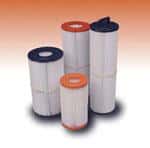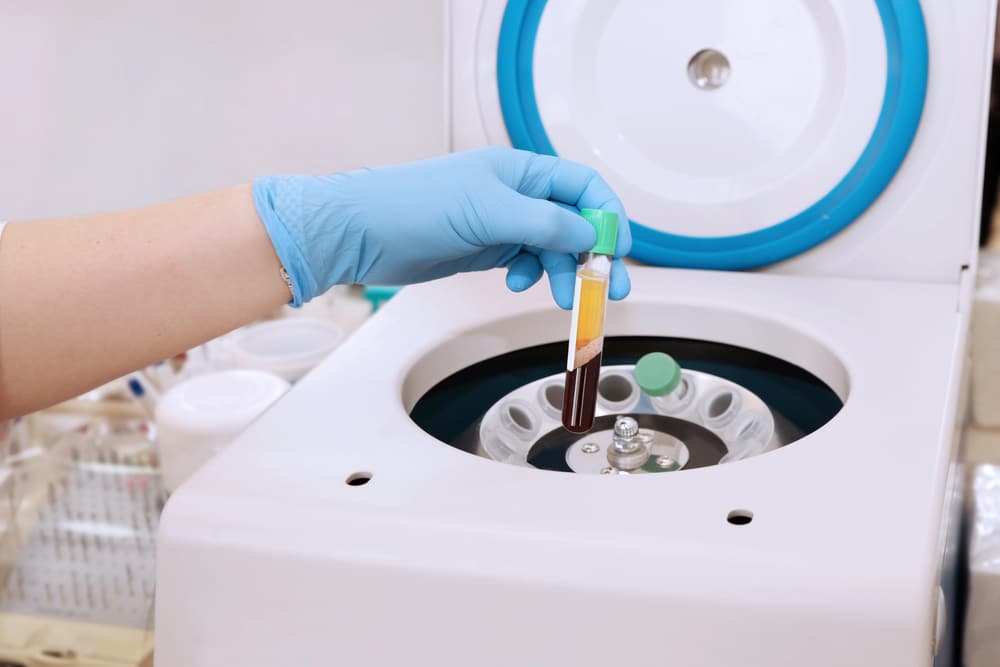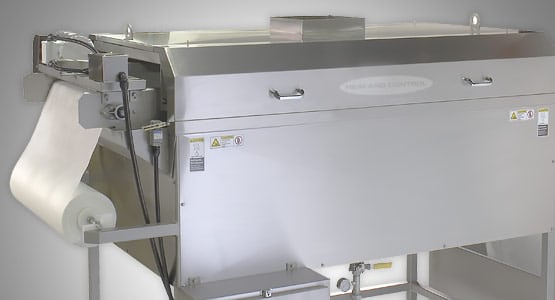You may not see them. You may not hear them. But make no mistake about it, filtration efforts are constantly going on around you. Everything from the water you drink to the air you breath undergoes some sort of filtration process before it reaches you and, if legislation continues as it has during the last several years, even more filtration efforts are expected to start up.
While additional filtration requirements may not mean good things for the factory that needs to filter its runoff before allowing it to re-enter the atmosphere, they are welcome by the many nonwoven roll goods producers selling their products into the filtration segment. Heralded as one of the fastest growing end use markets for nonwovens, filtration—both wet and dry—has recorded impressive annual growth levels in recent years and industry experts do not expect these increases to level off anytime soon as new market niches are uncovered almost daily for nonwoven filtration media.
“The growth in the filtration market varies depending on the market segment, but overall we’re seeing about 5-8% annual growth,” said industry consultant Edward Homonoff, president of Edward C. Homonoff & Associates, Brooklyn, CT. “Of course, some segments are growing faster and some are slower. This market is highly segmented by application.”
Filtration is divided into two key end use segments—air, or dry, and liquid, or wet—which are further broken down into myriad subsegments and end use categories. In the air filtration segment, nonwovens compete with a wide range of other materials including paper, fiberglass and wovens in applications including dust collection at large industrial installations, heating, ventilating and air conditioning (HVAC) systems, carburetors, vacuum cleaners and air cabin filters. Common nonwoven technologies include wetlaid, meltblown and needle punched. On the liquid side of the industry, applications include pool and spa filters, oil and lubricant filtration, water filtration, tea bags and coffee filters and blood filtration. Nonwoven technologies commonly used in this subsegment include wetlaid, meltblown and spunbonded.
In past years, nonwovens have been seen as pillagers in the filtration market, taking market share and applications from other types of media such as wovens and paper. “The demand for energy savings, low cost, recyclability and light weight gave nonwovens an advantage over other media,” explained Kirk Hwang, vice president corporate planning and international operations, KNH Enterprises, Taipei, Taiwan. “As nonwovens technology continues to advance with new innovation and cost improvement through economic scale, nonwovens will continue to dominate the media market.”
More recently, however, nonwoven materials have completed their proliferation in the filtration market and now nonwovens manufacturers are achieving growth by developing new filtration applications rather than simply replacing other forms of media in existing applications. “Over the years, nonwovens have replaced woven products with the greatest success,” said David Reaman, vice president nonwovens sales at Hollinee, Ingelside, IL. “Now the industry is deriving new categories for filtration applications. This is primarily being driven by things like environmental regulations.”
Additionally, as filtration technology progresses, nonwovens technologies are replacing other nonwovens technologies, creating a fiercely competitive marketplace. “All different kinds of markets are being created for nonwovens while certain nonwoven technologies are cannibalizing others as technology advances,” Mr. Homonoff said. For instance price pressures have led to a mass replacement of polyester needle punched bag filters by spunbonded cartridge filters because a great deal more media can fit into a cartridge than a bag, Mr. Homonoff added.
In general spunbonded nonwovens are seeing significant growth within filtration as backings as well as for pleated filter media and cartridge applications. “There continues to be a lot of opportunities in spunbond driven in part by becoming a replacement of existing materials,” said Steven Lister, general manager, filtration division at Johns Manville, Denver, CO.
JM recently developed a new fine-fiber spunbonded filtration product. Named “CombiFil,” the medium is a multi-layered structure composed of ultra-fine and coarse polyester filaments. The ultra-fine filaments on the filter surface provide a significant improvement in particle removal while the coarse filaments on the downstream side keep the pressure drop to a minimum. Benefits include improved filtration efficiency, lower pressure drop, long filter life, lower energy usage and excellent media cleanability.
Nonwovens Show Their Stuff
BBA Nonwovens, London, U.K., made its commitment to its filtration business clear last year when it purchased its long-time filtration distributor, Snow Filtration, Westchester, OH, and filtration provider AQF Technologies, Charlotte, NC. “By purchasing Snow Filtration, we are now able to work directly with customers and better understand their product requirements from a nonwovens manufacturing standpoint,” said Frank Baker, marketing director, BBA Filtration. “The acquisition of AQF has added a new technology offering to our filtration media while providing resources and testing capabilities to meet the growing needs of our customers.”
These moves have helped position BBA as a customer-focused global company that provides solutions based on synthetic nonwoven media and components for selected filtration markets, Mr. Baker added. Currently, BBA has several new products in its pipeline that will offer a combination of value and performance benefits.
Among the trends being witnessed by executives at BBA is a need for higher levels of both liquid and air filtration. “The overall need for a high level of both liquid and air purification is being driven in part by heightened public awareness,” explained David Burdge, general manager. “Recently we saw a significant increase in component orders from one of our customers that supplies filters for large buildings in the New York area. Generally people will seek better filtration of the water they drink and the air they breathe.”
In addition to public awareness, government regulations are also driving growth in the filtration market. “The filtration market is being transformed by legislative changes,” Mr. Homonoff said. “A lot of government regulations tend to drive growth in a number of segments.” Among these are HVAC, where Environmental Protection Agency efforts are heralding increased applications; blood filtration, where countries are calling for more transfusions to be filtered, and automotives, where diesel engine requirements are changing the design of the engine to require more filters.
Original Source: https://www.nonwovens-industry.com/contents/view_features/2005-08-17/nonwovens-in-filtration










